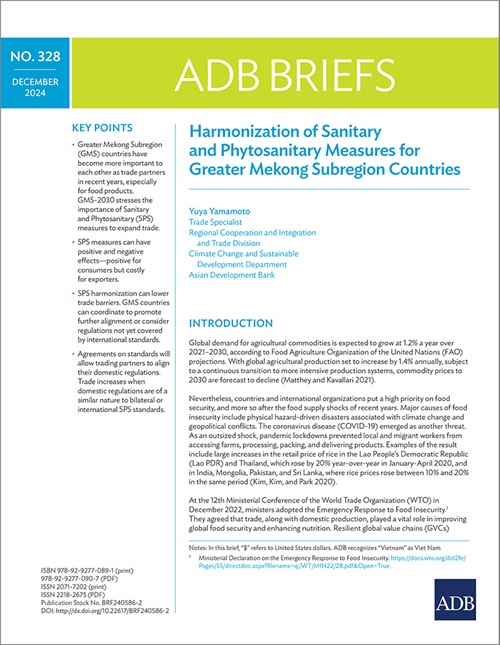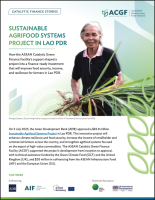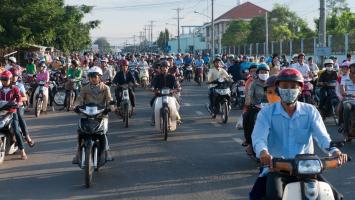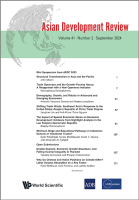Harmonization of Sanitary and Phytosanitary Measures for Greater Mekong Subregion Countries
 Download (174.96 KB)
Download (174.96 KB)
Publication Type:
Publisher:
Asian Development Bank (ADB)
Publication:
December 2024
This brief shows that harmonizing sanitary and phytosanitary measures among GMS countries can help lower trade barriers and signal product quality to consumers.
Greater Mekong Subregion (GMS) countries have become more important to each other as trade partners in recent years, especially for food products. The subregional program’s 10-year economic cooperation strategy stresses the importance of sanitary and phytosanitary measures to expand trade.
This brief shows that harmonizing sanitary and phytosanitary measures among GMS countries can help lower trade barriers and signal product quality to consumers. Pointing to rising trade between GMS countries and explaining the link between food security and global value chains, the brief examines how some exporters may initially be impacted by sanitary and phytosanitary measures due to adaptation costs. It recommends countries work to bring their domestic standards closer to international regulations and suggests they provide smaller exporters with trade finance and support to build capacity and drive economic growth.
Contents
- Introduction
- Trade among Greater Mekong Subregion Countries
- Sanitary and Phytosanitary Measures
- Literature Review on Sanitary and Phytosanitary Measures
- Recommendations to Harmonize Sanitary and Phytosanitary Measures of Food Products
- References


